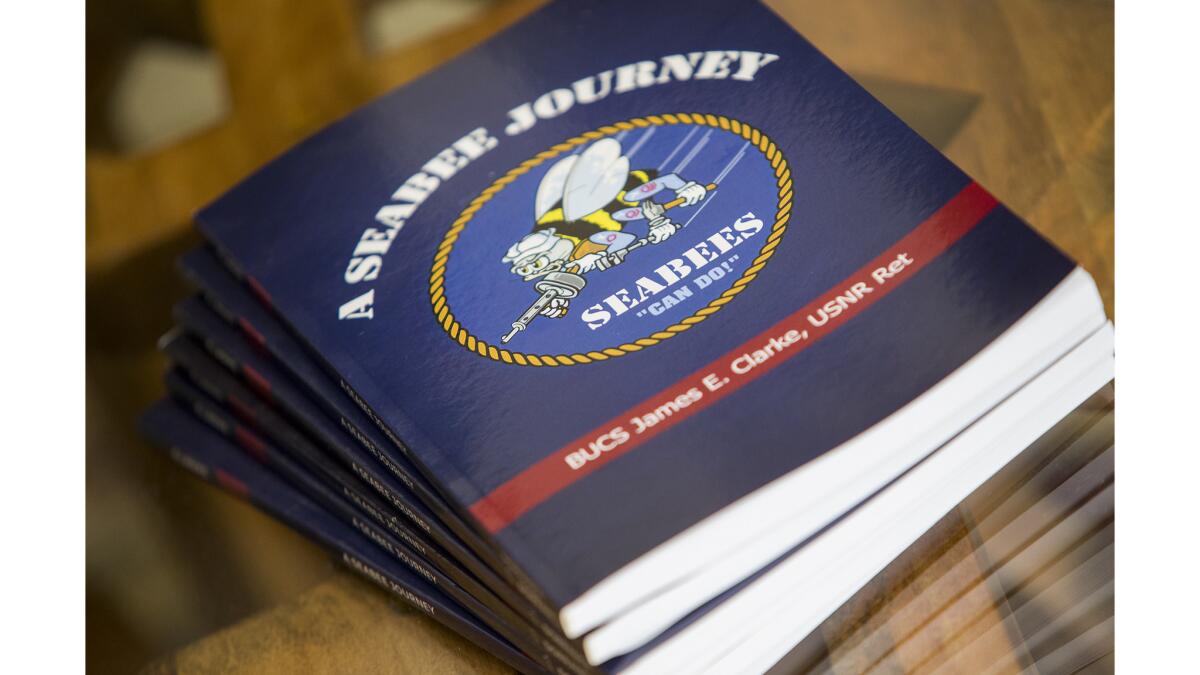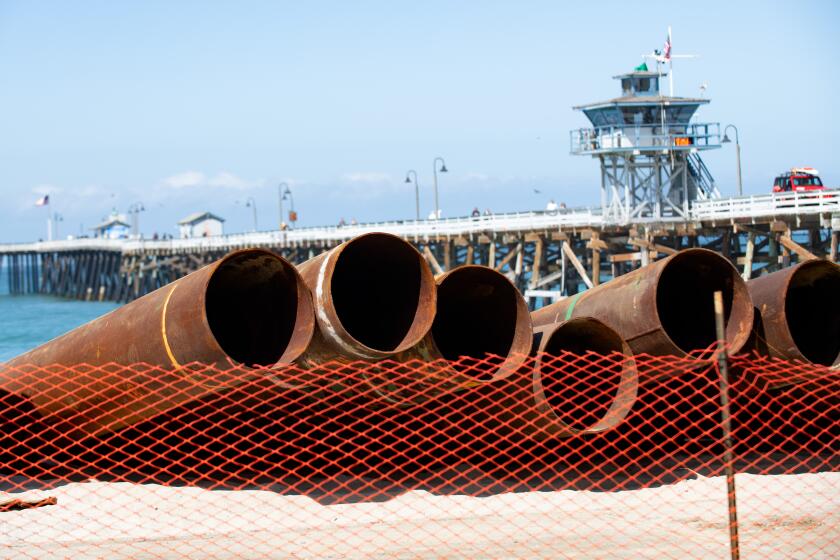Costa Mesa veteran writes memoir on contributions of the Navy’s Seabees

Jim Clarke wrote an autobiography about his decades of service in the U.S. Navy to give a voice to the military’s construction battalions who literally lay the foundations of national security.
“A Seabee Journey” spans the Costa Mesa resident’s nearly 40 years with the Navy, including his deployments to exotic locations in the Western Pacific and what comes off as an almost comical bureaucracy of the U.S. government. According to Clarke, most military memoirs are written by commissioned officers, not enlisted service members like the retired senior builder chief.
“I thought a book written by an enlisted [man] would be helpful,” Clarke, 83, said.
Clarke wrote “A Seabee Journey” while he was recovering in a Navy hospital for two weeks after throwing out his back while swinging a sledgehammer doing roadwork at the base on Okinawa Island. He was inspired to write a memoir after reading “All the Ships at Sea,” a naval officer’s account of fighting in the Pacific during World War II.
The book was essentially a collection of anecdotes about life in the U.S. Navy. Clarke realized almost immediately that he had plenty of interesting stories to share including one he almost didn’t survive.
He tells of the time he was chatting with a group of fellow Seabees on the base at Okinawa when a sailor came out of the jungle carrying a World War II-era naval cannon shell. He proceeded to drop the 2-foot long, corroded explosive at the sailors’ feet.
Each one of them cursed and flung himself as far away as possible. If the shell went off they all would have been dead. As the senior enlisted man in the group, Clarke cussed out the sailor and named that chapter “Praise the Lord and Pass the Ammunition.”
Clarke’s introduction to the military came in 1952 when he went to work with his civilian stepfather on a construction site at Marine Corps Air Ground Combat Center Twentynine Palms. While operating a bulldozer on the base, Clarke’s stepfather, Clyde, suffered devastating injuries to his leg, which required amputation.
A naval construction inspector visited the family in the hospital and offered to write the 18-year-old a letter to help streamline his enlistment. Clarke had previously been put on a waiting list when he tried to enlist because the nearest recruiting center had already met its monthly quota.
“I think it was providence,” Clarke said. “The guy said he could get me in. It was the best thing ever to happen to me.”

Clarke’s Cold War era service with the so-called Seabees started with helping build the American military base in Okinawa, Japan, which is still a critical hub for U.S. forces in the Western Pacific. These construction battalions became famous in the wake of the 1944 John Wayne film, “The Fighting Seabees.”
After leaving active military service, Clarke was briefly employed in the local aerospace industry before its collapse. At his wife’s suggestion, he applied for a faculty position with the construction technology department at Orange Coast College. He was interested in getting into education because he always found fulfillment in teaching younger sailors during his military service.
“I had really wanted to go to work for a construction company but I went with this for the potential for growth,” Clarke said.
He advanced from an entry-level adjunct position at OCC to full professorship and ultimately became chairman of his department.
Clarke now lives in a senior living community and serves as an elder at his church. He was recently surprised by an invitation from his pastor to deliver a sermon to the congregation even though he has no seminary training.
But perhaps there is some lesson he can share from his unrelenting determination to publish his book, even after learning from his publisher that he needed to retype the entire manuscript because the original word processor he used was outdated.
“I didn’t do it for money,” Clarke said. “I did it to see if I could get the book done.”
“A Seabee Journey” is available on amazon.com, Google Books, and dorrancepublishing.com.
Daniel Langhorne is a contributor to Times Community News.
All the latest on Orange County from Orange County.
Get our free TimesOC newsletter.
You may occasionally receive promotional content from the Daily Pilot.




